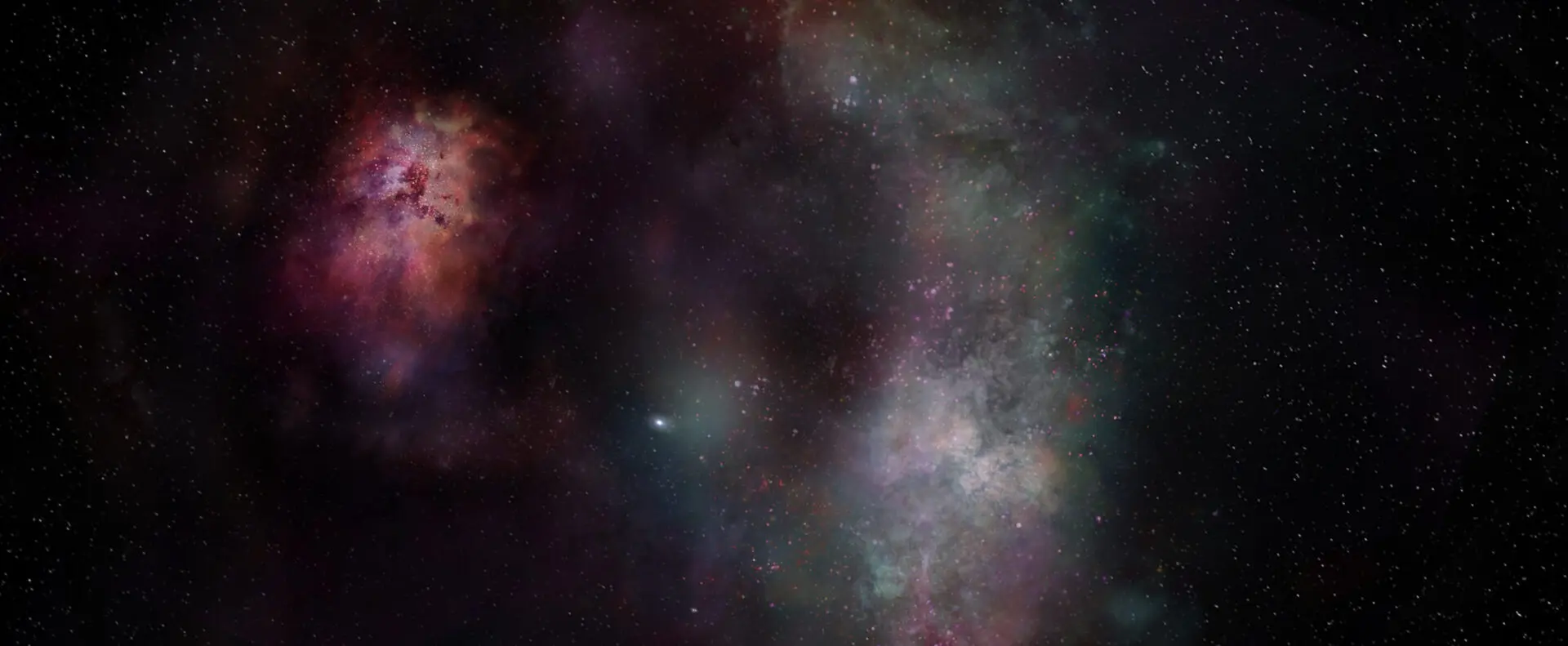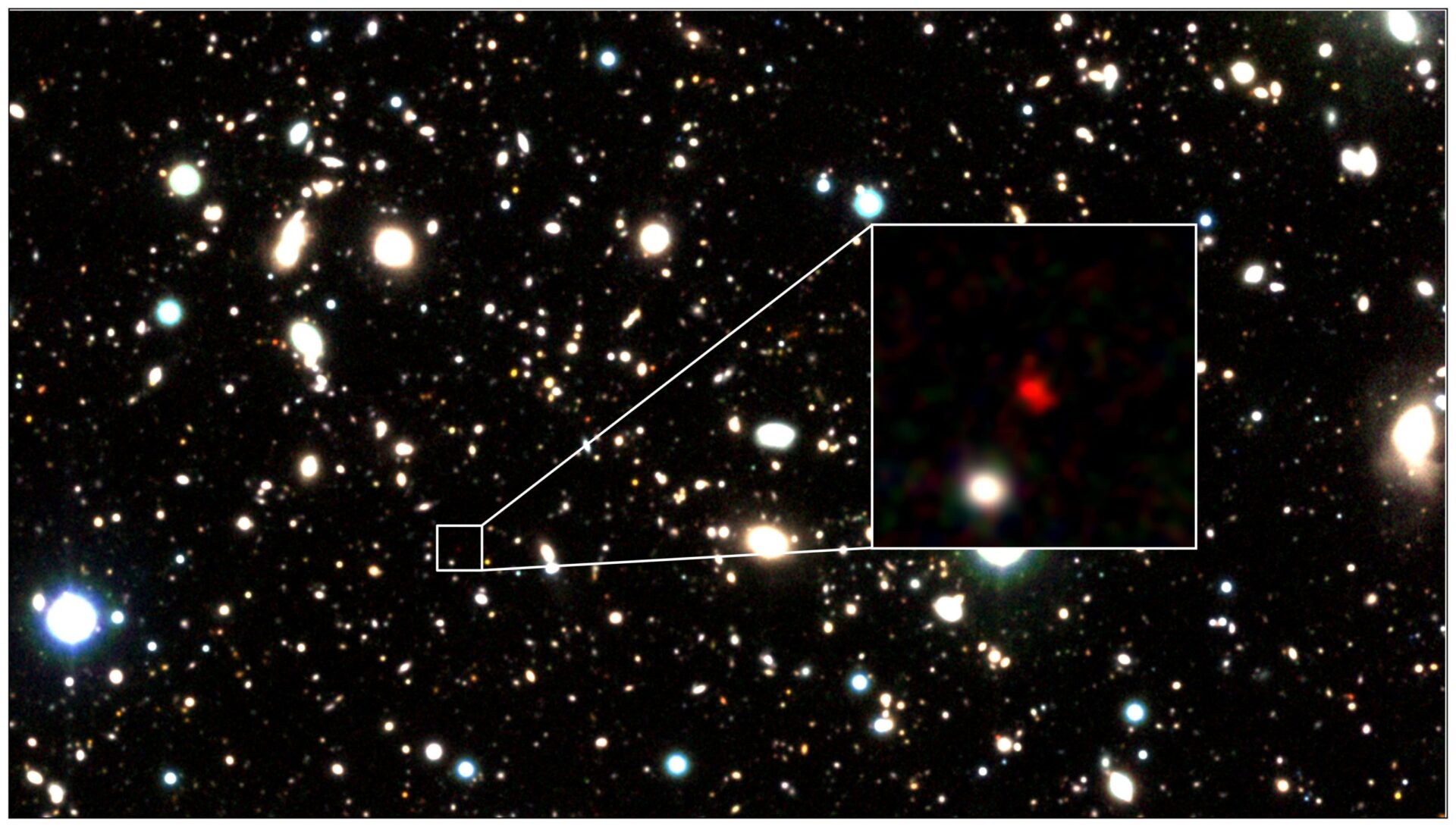Capturing the Onset of Galaxy Rotation in the Early Universe
An international research team led by Tsuyoshi Tokuoka, a graduate student at Waseda University in Japan, has observed signs of rotation in a galaxy, which existed in the early universe, only 500 million years after the Big Bang. This galaxy is by far the earliest galaxy with a signature of galaxy rotation. Its rotational speed is only 50 kilometers per second, compared to 220 kilometers per second for the Milky Way, indicating that the galaxy is still at an initial stage of developing a rotational motion. This finding would lead to a better understanding of the galaxy formation in the early universe.
As telescopes have become more advanced and powerful, astronomers have been able to detect more and more distant galaxies. Due to the expansion of the universe, these galaxies are receding away from us. This causes their emissions to be redshifted (shifted towards longer wavelengths). Interestingly, we can estimate how fast a galaxy is moving and, in turn, when it was formed based on how redshifted the emission appears. ALMA is particularly well-suited for observing such redshifts in galaxy emission.
An international research team has observed using ALMA redshifted emissions of a distant galaxy, MACS1149-JD1, or JD1 for short, which has led them to some interesting conclusions. "Beyond finding high-redshift, namely very distant, galaxies, studying their internal motion of gas and stars provides motivation for understanding the process of galaxy formation in the earliest possible universe," explained Richard S. Ellis, a professor at University College London.
Galaxy formation begins with the accumulation of gas and proceeds with forming stars from that gas. With time, star formation progresses from the center outward, a galactic disk develops, and the galaxy acquires a particular shape. As star formation continues, newer stars form in the rotating disk while older stars remain in the central part. It is possible to determine the evolutionary stage of the galaxy by studying the age of the stellar objects and the motion of the stars and gas.
The team successfully measured small differences in the "redshift" from position to position inside the galaxy, showing that JD1 satisfied the criterion for a galaxy dominated by rotation. The calculated rotational speed was about 50 kilometers per second, compared to the rotational speed of the Milky Way disk of 220 kilometers per second. The team also measured the diameter of JD1 at only 3,000 light-years, which is much smaller than that of the Milky Way at 100,000 light-years across.
The galaxy the team observed is by far the most distant source yet found that has a rotating disk. Together with similar measurements of nearer systems in the research literature, this has allowed the team to delineate the gradual development of rotating galaxies over more than 95% of our cosmic history.
Furthermore, the mass estimated from the rotational speed was in line with the stellar mass estimated previously from the spectral signature, and came predominantly from that of “mature” stars that formed about 300 million years ago. “This shows that the stellar population in JD1 formed at an even earlier epoch of the cosmic age,” said Takuya Hashimoto, an assistant professor at Univesity of Tsukuba.
"The rotational speed of JD1 is much slower than those found in galaxies in later epochs and the Milky Way, and JD1 is likely at an initial stage of developing a rotational motion," said Akio Inoue, a professor at Waseda University. With the recently launched James Webb Space Telescope, the team now plans to identify the locations of young and older stars in the galaxy to refine their scenario for its formation.
Additional information
These research results were published as T. Tokuoka et al, “Possible Systematic Rotation in the Mature Stellar Population of a z = 9.1 Galaxy,” in the Astrophysical Journal Letters (DOI: 10.3847/2041-8213/ac7447).
This research was supported by NAOJ ALMA Scientific Research Grant Numbers 2020-16B.
The Atacama Large Millimeter/submillimeter Array (ALMA), an international astronomy facility, is a partnership of the European Organisation for Astronomical Research in the Southern Hemisphere (ESO), the U.S. National Science Foundation (NSF) and the National Institutes of Natural Sciences (NINS) of Japan in cooperation with the Republic of Chile. ALMA is funded by ESO on behalf of its Member States, by NSF in cooperation with the National Research Council of Canada (NRC) and the Ministry of Science and Technology (MOST) and by NINS in cooperation with the Academia Sinica (AS) in Taiwan and the Korea Astronomy and Space Science Institute (KASI).
ALMA construction and operations are led by ESO on behalf of its Member States; by the National Radio Astronomy Observatory (NRAO), managed by Associated Universities, Inc. (AUI), on behalf of North America; and by the National Astronomical Observatory of Japan (NAOJ) on behalf of East Asia. The Joint ALMA Observatory (JAO) provides the unified leadership and management of the construction, commissioning and operation of ALMA.
Image

Contacts
-
Nicolás Lira
Education and Public Outreach OfficerJoint ALMA Observatory, Santiago - ChilePhone: +56 2 2467 6519Cel: +56 9 9445 7726Email: [email protected] -
Junko Ueda
Public Information OfficerNAOJEmail: [email protected] -
Bárbara Ferreira
ESO Media Manager -
Amy C. Oliver
Public Information & News Manager



